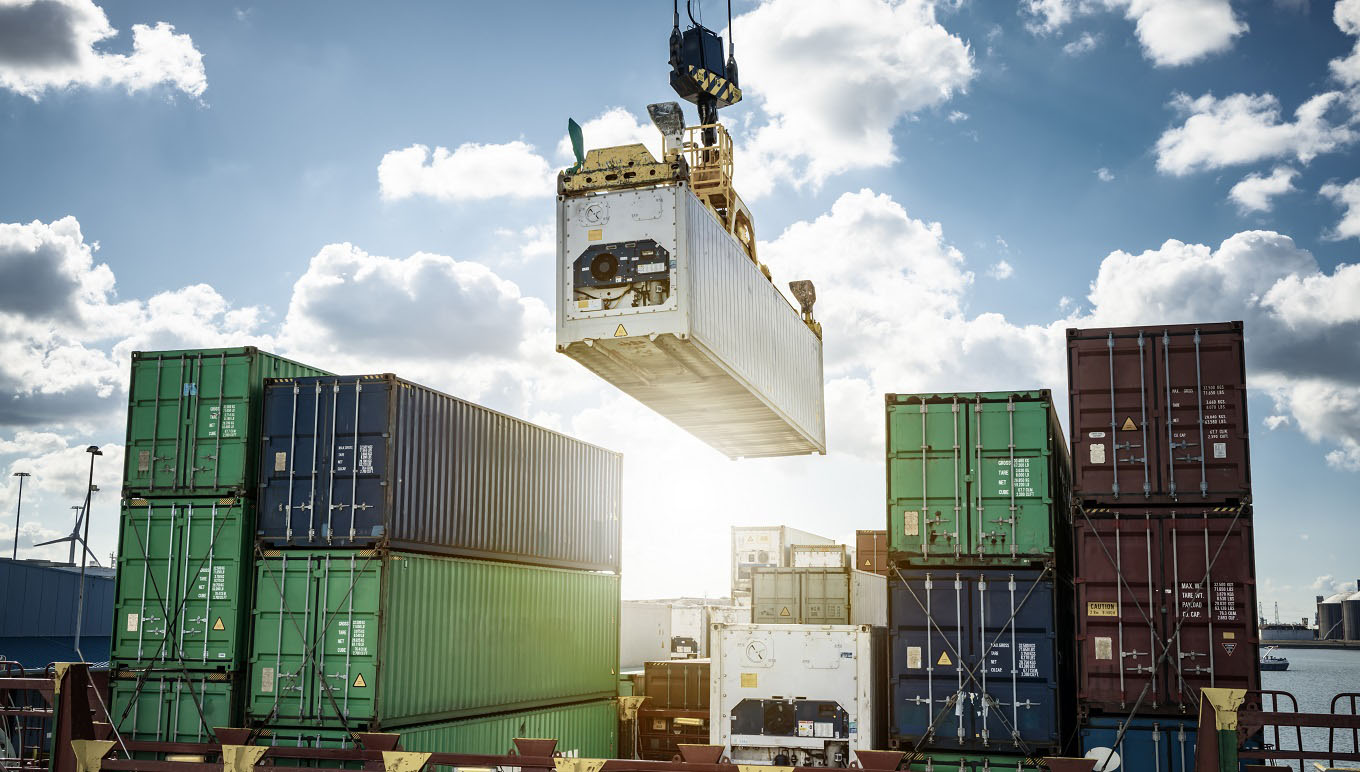The Future of Distribution: Technology Transforms Issues Into Opportunities
The Future of Distribution: Technology Transforms Issues Into Opportunities
The Future of Distribution: Technology Transforms Issues Into Opportunities
Mar 2, 2022
 Aptean Staff Writer
Aptean Staff Writer 
Sustainability isn’t just a future goal anymore for distribution and logistics. However, the industry is making slow progress, partially due to increased consumer demand, and partially due to the initial expense of creating a green company. Obviously, you are in business to make a profit, and many distributors have been slammed by rising freight costs already.
For most of you, trying to make your business sustainable is difficult at the best of times, but with industry disruptions, going green seems like an impossible task. While it’s true that the industry is in the midst of unprecedented changes, it’s also true that you need to think now about sustainable business practices and strategies—before tougher regulations take effect.
The pandemic illuminated the vulnerability of global supply chains. The distribution industry is essential in two respects: first, it provides consumers with the goods they need; and the industry is uniquely positioned to make substantial strides toward sustainable business practices. This means that distributors can set the stage for what will happen next. Distributors have only two choices—you innovate, or you fall behind.
Based upon recent disruption and market fluctuations, analysts predict that the distribution vertical will continue to battle three major problems.
1. Continued labor shortages.
2. Increasing competition and continued supply chain disruptions.
3. Stricter regulations passed in all countries.
Instead of letting these problems plague your distribution business, let’s examine what you can do to understand these trends and how you can turn them into opportunities.
Continued Labor Shortages
From the nationwide driver shortage to stevedores to warehouse workers, all parts of the supply chain are having trouble attracting and retaining talent. Most boomers are far past retirement age, and the younger generations tend to perceive supply-chain jobs as labor-intensive and low tech. They also want roles where they can add value to the business and use new technologies.
To retain and recruit top talent, distributors can use technology to analyze their operational activities. This allows your employees to focus on the tasks that matter, and not let them get bogged down in manual processes. It’s all about digitizing your business.
Automation can help you to attract and retain employees. Digitizing your enterprise means greater productivity and efficiency—which is where leveraging technology yields significant returns, not just to your bottom line, but in employee satisfaction. The less time your team must spend on arduous administrative work, the more time they can spend on meaningful tasks.
If your company uses a separate warehouse management system, eCommerce platform, sales CRM, and accounting software, how is everyone getting information? How do they know it’s in real time and whether it’s accurate? How will you know if your processes are as efficient as they could be? Automating many of the manual processes in your operation will deliver some measurable and sustained improvements. Connecting disparate systems through technology, like a robust distribution ERP, gives your team measurable analytics that will help them make better decisions. It will help them make a difference, and that is what every employee wants—to feel like their efforts matter.
So, how can technology make your business more sustainable? By reducing waste. A waste of good talent is just as harmful to your bottom line as inefficient, manual processes. In addition, because an ERP offers full system functionality from any device, and it can be accessed from anywhere, your employees that don’t perform physical work can operate remotely.
Increasing Competition and Supply Chain Disruption
The distribution vertical faces increased competition from suppliers, adjacent industry players, and marketplaces. New competitors are leveraging technology to disrupt distribution and capitalize on the B2B and B2C eCommerce market. Distributors must stay agile to remain competitive in the face of this constantly changing ecosystem.
Your organization can retain its market share by rethinking how you plan inventory, how you manage inventory, and how to forecast inventory, despite supply chain and market disruption. Just-in-time practices won’t cut it anymore. You need real data, and you need it fast. You need Business Intelligence (BI).
You’ll make better business decisions when you integrate a BI platform into your ERP. With BI, you analyze sales patterns instantly and make decisions based on statistical analysis and data. Then leverage this data to make decisions about inventory, supply chain management and risk mitigation.
In addition, BI lets you analyze operational processes and pull together data on performances of various departments. You’ll know your organization’s strengths and weaknesses with tools to help you understand what’s working and what isn’t. With the right combination of BI and ERP systems you can set up alerts and track critical metrics which can be used to identify and make necessary changes—so you’re one step ahead of your competition at every turn.
The pandemic meant one of two things for most distributors—they either had more demand than they could comfortably handle, or demand tanked. Savvy distributors had to figure out what to do with the inventory they already had, or how to get more despite a choking supply chain.
Many chose to go the D2C route—but for many distributors, that wasn’t a channel to which they could easily pivot. Could D2C work for your enterprise, or do you need to maintain your current retail relationships? With a robust BI, you can instantly analyze if a new business scenario is right for your organization. To keep up with your competitors, focus on the technology. You need to better forecast and plan around demand, as well as anticipate future supply chain disruptions.
This means that you won’t have a warehouse full of products that you cannot sell—which means less waste and more profit. It’s a win-win.
Stricter Regulations Passed in All Countries
The ever-growing set of government regulations impacts every aspect of the supply chain, from manufacturers to distributors. Depending on where you are in the world, the government can step in at any point and require extra paperwork or ask for an audit. Then the supply chain stops as shipments are inspected and cataloged. To ensure that you are prepared for any contingency—whether from customs or the FDA, you need the right tools. We’d suggest a distribution ERP with built-in EDI and supply-chain management tools, as well as warehouse management.
We get it—increasing regulatory requirements add complexity for distributors. You not only need to be aware of both state and national laws, but also international regulations, specifically around customer protection and product traceability. Depending on your distribution vertical, you need to track, trace and monitor goods along the entire supply chain.
For example, The Dodd-Frank Act in the U.S. regulates the use of any mineral from a conflict zone, which means that you must be aware of where you or your suppliers are sourcing your raw materials. Title 21 CFR comprises a convoluted set of labeling and traceability standards that covers everything from pharmaceuticals to dairy.
It’s all part of the cost of distribution.
However intelligent distributors know that they simply need the right digital platform. A robust, industry-specific ERP lets them quickly pivot and adapt to security and regulatory requirements. The right technology lets you meet long-term compliance and regulatory restrictions—with minimal impact to your bottom line.
Let’s face it—you cannot afford to miss out on a shipment because you didn’t fill out paperwork correctly or mislabeled something. And today’s consumer wants to know where their goods originated, and whether that source was using sustainable practices. If you have the right information at your fingertips, you can keep up with ever-changing regulations and more demanding consumers. An industry-specific ERP will not only keep your paperwork correct, but it gives you full visibility into your supply chain—and that is what sustainability is all about.
As a distributor, you need to think about sustainability as a business philosophy in the context of your company’s operational, strategic and market realities. Sustainability is a long-term investment—and you are building a framework that focuses on your direct and indirect influence on environmental impact, carbon emissions and cutting waste.
Want to see how an industry-specific distribution ERP can help make your business more sustainable? Our industry experts are here to help. Find out how, now.
Ready to Start Transforming Your Business?
We’ve got the specialized ERP solutions you need to conquer your industry challenges.



